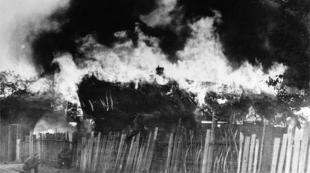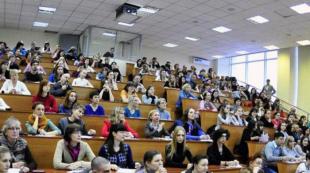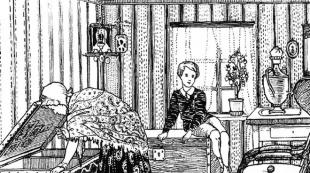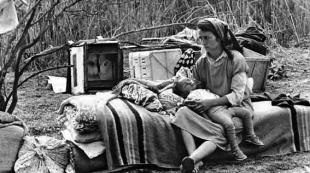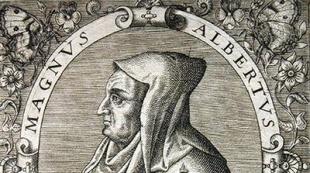Who burned the hut. Who burned the hut. Museum and prices
One of the most mournful episodes of the Great Patriotic War was the destruction of the inhabitants of the village of Khatyn in Belarus by fascist punishers. Despite the fact that the memorial was created for the victims of this tragedy back in Soviet times, the whole truth became known to the general public only during the years of perestroika.
Ambush in the forest
The tragic story of the Belarusian village of Khatyn, which by that time had already been in the German occupation zone for a year and a half, began on March 21, 1943, when a partisan detachment of Vasily Voronyansky spent the night in it. The next morning, the partisans left their place of lodging for the night and moved towards the village of Pleschenitsy.
At the same time, a detachment of German punishers, heading for the city of Logoisk, left to meet them. Together with them, police captain Hans Wölke, heading to Minsk, rode in the lead car. It should be noted that this officer, despite his relatively low rank, was well known to Hitler and enjoyed his special patronage. The fact is that in 1916 he became the winner of the Berlin Olympic Games in the shot put competition. The Fuhrer then noted an outstanding athlete, so he followed his career.
Having left Pleshenitsy on March 22, the punishers from the 118th battalion of the 201st security division, fully formed from former Soviet citizens who expressed a desire to serve the occupiers, moved in two trucks, in front of which a car with officers drove. Along the way, they came across a group of women ─ residents of the nearby village of Kozyri, who were engaged in logging. When asked by the Germans about whether they had seen partisans nearby, the women answered in the negative, but literally after 300 meters the German column was ambushed by the fighters of Vasily Voronyansky.
The first stage of the tragedy
This partisan attack became the impetus for the entire subsequent tragedy in the history of Khatyn. The punishers resisted the partisans, and they were forced to retreat, but during the skirmish they lost three people killed, among whom was the Fuhrer's favorite, Captain Hans Wölke. The commander of the punitive platoon, a former Red Army soldier Vasily Meleshko, decided that the women who worked in the logging industry deliberately hid the presence of partisans in the area from them, and immediately ordered 25 of them to be shot, and the rest to be sent to Pleschenitsy for further investigation.
Pursuing the attacking fighters, the punishers carefully combed the forest surrounding them and went to Khatyn. The war on the territory of occupied Belarus at that time was conducted mainly by partisan detachments, which enjoyed the support of the local population, which gave them temporary shelter and supplied them with food. Knowing this, the punishers surrounded the village in the evening of the same day.

Gang of traitors to the Motherland
The tragic history of Khatyn is inextricably linked with the 118th battalion of the Schutzmannschaft ─ this is how the Germans called the security police units, formed from volunteers recruited among captured Red Army soldiers and residents of the occupied territories. This unit was created in 1942 on the territory of Poland and initially consisted only of former Soviet officers. Then its recruitment was continued in Kiev, including a large number of ethnic Ukrainians, among whom nationalists from the pro-fascist Bukovynian Kuren group, which had been liquidated by that time, predominated.
This battalion was engaged exclusively in the fight against partisans and punitive operations carried out against the civilian population. He carried out his activities under the leadership of officers from the Sonderbattalion SS "Dirlewanger". Quite indicative is the list of persons who were at the head of the battalion. Its commander was a major of the Polish army, who went over to the side of the Germans, Jerze Smovsky, the chief of staff was Grigory Vasyura, a former senior lieutenant of the Soviet army, and the commander of the platoon that shot women in the forest was the former senior lieutenant of the Soviet army Vasily Meleshko, already mentioned above.
In addition to the punitive operation in the village of Khatyn, the history of the battalion, entirely staffed by traitors to the Motherland, includes many similar crimes. In particular, in May of the same year, his commander Vasyura developed and carried out an operation to destroy a partisan detachment operating in the area of the village of Dalkovichi, and two weeks later he brought his punishers to the village of Osovi, where they shot 79 civilians.
Then the battalion was transferred first to the Minsk, and then to the Vitebsk region, and everywhere a bloody trail stretched behind them. So, having massacred the inhabitants of the village of Makovye, the punishers killed 85 civilians, and in the village of Uborok they shot 50 Jews hiding there. For the shed blood of his compatriots, Vasyura received a lieutenant rank from the Nazis and was awarded two medals.
Revenge on the partisans
Punitive actions against the inhabitants of the village of Khatyn became revenge for the destruction of three enemy soldiers by partisans, among whom was Hitler's favorite, which infuriated the German command. This inhuman act, which will be described below, was carried out in accordance with the principle of collective responsibility, which is a flagrant violation of the rules of war accepted by the international community. Thus, the entire history of the Khatyn tragedy is a blatant example of the violation of international legal norms.

Inhuman action
On the same evening of March 22, 1943, policemen led by Grigory Vasyura herded all the villagers into a covered collective farm shed, after which they locked the door from the outside. Those who tried to escape, realizing that imminent death awaited ahead, were shot right on the go. Among the residents locked in the barn, there were several families with many children. For example, the Novitsky spouses, who fell victim to the punishers, had seven children, and Anna and Joseph Boronovsky had nine. In addition to the inhabitants of the village, several people from other villages were also inside the barn, who, unfortunately, ended up in Khatyn that day.
Having driven the unfortunate victims inside, the punishers doused the shed with gasoline. When everything was ready, Vasyura gave a sign, and the policeman-translator Mikhail Lukovich set fire to him. Dry wooden walls quickly flared up, but under the pressure of dozens of bodies, unable to withstand it, the doors collapsed. In burning clothes, people broke out of the premises engulfed in fire, but immediately fell, struck down by long machine-gun bursts.
Simultaneously with these punishers, all residential buildings in the village of Khatyn were set on fire. Documents drawn up as a result of an investigation carried out after the liberation of this region by the troops of the First Belorussian Front, indicate that 149 civilians died that day, including 75 children under the age of 16.
Survivors of death
Only a few managed to survive then. Among them were two girls ─ Yulia Klimovich and Maria Fedorovich. They miraculously got out of the burning barn and hid in the forest, where the next morning they were picked up by the inhabitants of the neighboring village of Khvorosteni, which, by the way, was also subsequently burned by the invaders.
In the ensuing tragedy, five children managed to avoid death, although they were injured, but survived thanks to the circumstances and the local blacksmith ─ 57-year-old Joseph Kaminsky. Already in the post-war years, when the Khatyn State Memorial Complex was being created, he and his son, who died in his arms, served as the prototype of the famous sculptural composition, the photo of which is presented below.

Distortion of historical truth
During the Soviet period, the tragic history of Khatyn was deliberately distorted by military historians. The fact is that soon after the victory over the Nazis, the first secretary of the Central Committee of the Communist Party of Ukraine, V. Shcherbitsky, and his colleague, the head of the Communists of Belarus, N. Slyunkov, turned to the Central Committee of the CPSU with a very dubious initiative. They asked not to disclose the fact of participation in the brutal massacre of the inhabitants of Khatyn by Ukrainians and Russians, who had previously served in the Red Army and voluntarily went over to the side of the enemy.
Their initiative was treated “with understanding”, since official propaganda tried to present cases of Soviet citizens going over to the side of the enemy as isolated facts and hushed up the true extent of this phenomenon. As a result, a myth was created and disseminated that the village of Khatyn (Belarus) was burned by the Germans, who conducted a military operation in March 1943 against partisans operating in that area. The true picture of events was carefully hushed up.
In this regard, it is appropriate to cite the following fact. One of the children who escaped that fateful day, Anton Boronovsky, who was 12 years old at the time of the tragedy, clearly remembered the details of what happened and after the war spoke about the nightmare he experienced. As it turned out, he knew some of the policemen who participated in the massacre of the villagers and even called them by name. However, his testimony was not given a course, and he himself soon died under unclear and very strange circumstances ...
Post-war fate of executioners
After the war, the fate of those who, having joined the ranks of the 118th punitive battalion, voluntarily assumed the role of executioner, developed differently. In particular, platoon commander Vasily Meleshko, the same one who, before the destruction of the inhabitants of Khatyn, ordered the execution of 25 women suspected of assisting partisans, managed to hide from justice for 30 years. Only in 1975 he was exposed and shot by the verdict of the Supreme Court of the USSR.

The former chief of staff of the 118th battalion, Grigory Vasyura, met the end of the war in the 76th infantry regiment of the Wehrmacht and, once in a filtration camp, managed to hide his past. Only seven years after the victory, he was brought to trial for collaborating with the Germans, but nothing was known about his involvement in the tragedy that broke out in Khatyn. Vasyura was sentenced to 25 years in prison, but after three years he was released under an amnesty.
Only in 1985 did the KGB officers manage to get on the trail of this traitor and executioner. By this time, Vasyura served as deputy director of one of the state farms located near Kiev. He was even awarded the medal "For Valiant Labor"! Irony, isn't it? Every year on May 9, as a war veteran, he received congratulations and gifts from the leadership of the district party organization.
He was often invited to schools, where Vasyura spoke to the pioneers in the guise of a front-line hero, told them about his heroic past and called on the younger generation to selflessly serve the Motherland. This scoundrel was even awarded the title of "Honorary cadet of the Kalinin Higher Military School of Communications." In November 1986, a trial of Vasyura took place, during which documents were announced showing that during his service in the 118th punitive battalion, he personally destroyed 365 civilians ─ women, children and the elderly. The court sentenced him to capital punishment.
Another "front-line hero" was Stepan Sakhno, an ordinary punitive battalion. After the war, he settled in Kuibyshev and, like Vasyura, posed as a war veteran. In the 70s, he came to the attention of the investigating authorities and was exposed. The court showed relative leniency towards this bastard, and sentenced him to 25 years in prison.
Two traitors who voluntarily joined the ranks of the 118th punitive battalion - commander Vasily Meleshko and private Vladimir Katryuk - after the war, managed to change their names, hide abroad and avoid fair retribution. Both of them, unfortunately, died a natural death ─ one in the USA, the other in Canada. The remaining members of the battalion were killed during the liberation of Belarus by Soviet troops. Perhaps someone managed to cover their tracks, but nothing is known about this.

memorial memorial
In 1966, at the government level, it was decided to create a memorial complex on the site of the tragedy that broke out in 1943 in memory of not only the victims of Khatyn, but also the inhabitants of all Belarusian villages burned by the Nazis. A competition for the best project was announced, the winner of which was a group of Belarusian architects headed by the People's Artist of the BSSR ─ S. Selikhanov.
They created a grandiose memorial complex "Khatyn", the area of which is 50 hectares. Its opening took place in July 1969. The center of the entire architectural composition is a six-meter sculpture depicting the mournful figure of a man with a dead child in his arms. It was said above that the surviving resident of the village, Joseph Kaminsky, became its prototype. The former streets of Khatyn were lined with gray concrete slabs resembling ashes in color and texture, and symbolic stone log cabins with obelisks were built on the site of the burnt houses.
On the territory of the complex there is a unique cemetery of Belarusian villages destroyed during the war. It includes 186 graves, each of which symbolizes one of the burned, but never revived villages. The memorial included many other architectural compositions full of deep meaning.
For those who wish to visit it, we will tell you how to get to Khatyn from Minsk, since residents of other cities will have to focus on the capital of Belarus anyway. Getting to the memorial complex is easy. It is enough to take a fixed-route taxi departing from the station along the route Minsk - Novopolotsk and, having reached Khatyn, join one of the excursions.
Another monument of the events of the war years was the book “The Bells of Khatyn” by the Belarusian writer Vasily Bykov, published in 1985. Written in the genre of classical prose, the book in its own way reveals the tragic depth of the catastrophe that cost the lives of civilians in the village of Khatyn (1943).

The truth that can't be hidden
During the years of perestroika and the subsequent period, many documents became public property that shed light on those episodes of Russian history that had previously been hidden by the official authorities. The history of Khatyn also received new coverage. Finally, the real names of the executioners of the Belarusian people were publicly named. In the media of those years, publications often appeared that contained the testimony of both the surviving participants in the tragedy themselves and residents of neighboring villages who witnessed the incident.
On the basis of archival materials, from which the stamp “Secret” was removed, directors Alexander Miloslavov and Olga Dykhovichna created a documentary film “The Shameful Secret of Khatyn”. He was released on the screens of the country in 2009. The creators of the film spoke with all frankness about how the war showed in people not only the highest patriotism and selflessness, but also a deep moral decline.
You will not find this Belarusian village on any of the most detailed geographical maps today. It was destroyed by the Nazis in the spring of 1943.
This happened on March 22, 1943. The brutalized fascists broke into the village of Khatyn and surrounded it. The villagers did not know anything about the fact that in the morning, 6 km from Khatyn, partisans fired on a fascist convoy and killed a German officer as a result of the attack. But the fascists have already passed a death sentence on innocent people. The entire population of Khatyn, young and old - the elderly, women, children were driven out of their homes and driven to the collective farm barn. The butts of machine guns were lifted from the bed of the sick, the elderly, did not spare women with small and infant children. The families of Joseph and Anna Baranovsky with 9 children, Alexander and Alexandra Novitsky with 7 children were brought here; the same number of children were in the family of Kazimir and Elena Iotko, the youngest was only one year old. Vera Yaskevich was brought into the barn with her seven-week-old son Tolik. Lenochka Yaskevich first hid in the yard, and then decided to take refuge in the forest. The bullets of the Nazis could not catch up with the running girl. Then one of the Nazis rushed after her, catching up, shot her in front of her father, distraught with grief. Together with the residents of Khatyn, Anton Kunkevich, a resident of the Yurkovichi village, and Kristina Slonskaya, a resident of the Kameno village, were driven into the barn, who at that time ended up in the village of Khatyn.
Not a single adult could go unnoticed. Only three children - Volodya Yaskevich, his sister Sonya Yaskevich and Sasha Zhelobkovich - managed to escape from the Nazis. When the entire population of the village was in the shed, the Nazis locked the doors of the shed, lined it with straw, doused it with gasoline and set it on fire. The wooden shed immediately caught fire. Children were choking and crying in the smoke. The adults tried to save the children. Under the pressure of dozens of human bodies, they could not stand it and the doors collapsed. In burning clothes, terrified, people rushed to run, but those who escaped from the flames, the Nazis cold-bloodedly shot from machine guns and machine guns. 149 people died, including 75 children under 16 years of age. The village was looted and burned to the ground.
Two girls from the Klimovich and Fedorovich families - Maria Fedorovich and Yulia Klimovich - miraculously managed to get out of the burning barn and crawl to the forest. Burnt, barely alive, they were picked up by the inhabitants of the village of Khvorosteni of the Kamensky village council. But this village was soon burned by the Nazis and both girls died.
Only two children from those who were in the barn survived - seven-year-old Viktor Zhelobkovich and twelve-year-old Anton Baranovsky. When, in burning clothes, terrified people ran out of the burning barn, Anna Zhelobkovich ran out together with other villagers. She firmly held the hand of her seven-year-old son Vitya. A mortally wounded woman, falling, covered her son with herself. The child, wounded in the hand, lay under the corpse of his mother until the Nazis left the village. Anton Baranovsky was wounded in the leg by an explosive bullet. The Nazis mistook him for dead.
Burnt, wounded children were picked up and left by residents of neighboring villages. After the war, the children were brought up in an orphanage in the town of Pleschenitsy.
The only adult witness to the Khatyn tragedy, 56-year-old village blacksmith Iosif Kaminsky, burned and wounded, regained consciousness late at night, when the Nazis were no longer in the village. He had to endure another heavy blow: among the corpses of his fellow villagers, he found his wounded son. The boy was mortally wounded in the stomach and received severe burns. He died in his father's arms.
This tragic moment in the life of Joseph Kaminsky was the basis for the creation of the only sculpture of the memorial complex "Khatyn" - "Unbowed Man".
The tragedy of Khatyn is one of the thousands of facts testifying to the purposeful policy of genocide against the population of Belarus, which was carried out by the Nazis throughout the entire period of occupation. Hundreds of such tragedies occurred during the three years of occupation (1941-1944) on Belarusian soil.
Khatyn - the former village of the Logoisk district of the Minsk region of Belarus - was destroyed by the Nazis on March 22, 1943.
On the day of the tragedy, near Khatyn, partisans fired on a Nazi convoy and killed a German officer as a result of the attack. In response, the punishers surrounded the village, herded all the inhabitants into a barn and set it on fire, and those who tried to escape were shot from machine guns and machine guns. 149 people died, including 75 children under the age of 16. The village was looted and burned to the ground.
The tragic fate of Khatyn befell more than one Belarusian village. During the Second World War .
In memory of hundreds of Belarusian villages destroyed by the Nazi invaders, in January 1966 it was decided to create a memorial complex "Khatyn".
In March 1967, a competition was announced for the creation of a memorial project, which was won by a team of architects: Yuri Gradov, Valentin Zankovich, Leonid Levin, sculptor - Sergey Selikhanov.
The memorial complex "Khatyn" is included in the state list of historical and cultural heritage of Belarus.
The material was prepared on the basis of information from RIA Novosti and open sources
History, unfortunately, is rich in tragic events associated with the merciless killing of civilians. The village of Khatyn, the history of its destruction still remain in the memory of the Belarusian people as an incredible act. Scary... Very scary... After all, Khatyn could live... The history of the tragedy will be briefly outlined in this article.
Khatyn: who burned it?
History, especially its controversial moments, after very often becomes the subject of various political speculations. For example, a version has recently appeared that the Belarusian village of Khatyn was burned down by Ukrainian nationalists who fought against the Red Army. Of course, each version has the right to exist, but historical facts speak of the groundlessness of this version. The fact is that certain groups of the UPA (battalions "Nachtigal", "SS-Galicia") really fought on the side of the Nazis, but it is known for sure that there were no detachments of Ukrainian nationalists in this territory.
This means that there are no other options but to assert that the village of Khatyn was burned by the Germans and policemen.
Causes of the tragedy of Khatyn
On the night before the ill-fated tragic day of March 22, 1943, a partisan detachment spent the night in the village. By itself, this fact could anger the Nazis and policemen. After spending the night, the partisans advanced early in the morning towards the village of Pleskovichi. It was here that an event occurred that caused the village to disappear from the face of the earth and from geographical maps. On the way, our partisans ran into a detachment of policemen, along with whom German officers were moving, including the 1936 Olympic champion Hans Welke. A shootout ensued, during which many partisans and Germans, including officers, were killed. Among the dead was the aforementioned Olympic champion.

Undoubtedly, the partisans did the right thing by getting involved in the battle with this detachment, because in the conditions of a direct collision with the enemy it is impossible to behave differently. The Germans saw them, that is, the Nazi command received information that there was a large detachment of partisans in the area. Such reports usually led to an aggravation of the situation in the area where the partisans were seen.
What did the Germans invent?
Such courage of partisan detachments often ended in grief for the surrounding settlements from the place of clashes. Recovering from the battle that had taken place and quickly remembering the dead, the Germans immediately began to think about revenge. This German detachment just turned out to be one of the most cruel German punishers - SS Sturmbannfuehrer Dirlewanger. Therefore, a soft decision was not to be expected. The Germans decided to act in their traditional way: to burn the nearest settlement to the place of the recent battle. It turned out to be the village of Khatyn, the history of the tragedy of which is known to the entire civilized world and serves as a vivid example of the terrible crimes of German fascism against humanity in general and the Belarusian people in particular.

How was the massacre of civilians?
The village of Khatyn is a relatively small settlement in Belarus. The Germans destroyed it on March 22, 1943. In the morning of this day, civilians got up and began to do their homework, not suspecting anything that for the vast majority of them this day would be the last in their lives. The German detachment appeared in the village unexpectedly. It became clear to the residents about what was going to happen when they began to be driven not to the square for an ordinary meeting, but to the barn of the former collective farm (by the way, some sources contain information that the barn was not a collective farm at all, but one of the residents of Khatyn Joseph Kaminsky). No one received mercy, because even sick people who could barely get out of bed were persecuted. Traitors mocked such people even before the moment of burning, because the whole way of sick people to the barn was accompanied by blows from gun butts on the back. Small children were also victims. For example, Vera Yaskevich, a resident of Khatyn, was brought to a barn with her son in her arms. He was only 7 weeks old! And how many one-year-old children died from fascist fire ...
All the inhabitants of the village were herded into a barn, the doors of the barn were closed with bolts. Then mountains of straw were laid around the entire perimeter of the barn and set on fire. The shed was wooden and caught fire almost immediately. The chances of people surviving the fire were minimal because the barn had three compartments, separated by wooden partitions made of thick logs. Such is the sad fate of the village called Khatyn. Who burned this settlement now, we hope, is clear to everyone ... All possible sources have been analyzed, including German military documents and Soviet newspapers of that time, so the German trace is simply obvious.

How many people died?
It is known for sure that before the war there were 26 houses in the village. Based on the fact that many families, according to modern concepts, were large, it can be calculated that the population of the village could be about 200 people or even more. Even today it is impossible to say exactly about the number of dead, because different sources provide information that contradicts each other. For example, the Germans claim to have killed 90 people. Some Soviet newspapers wrote that the village of Khatyn, the history of the tragedy of which became immediately known throughout the USSR, lost 150 people. Most likely, the last figure is most true. But in any case, we are unlikely to find out exactly how many people died in the village in the near future: history, perhaps, will someday dot the i's in this tragedy. We are well aware that only excavations at the site of the conflagration can bring us closer to the truth.

What does it mean to survive after Khatyn?
Every person loves life and strives to live as long as possible and raise their children. The people burning in the barn fought for themselves. They knew that even if they could escape, the probability of surviving was low, but everyone dreamed of escaping and escaping into the forest from the bullets of fascist guns. The villagers managed to tear down the doors of the shed and some of them were able to run free. The picture was terrible: people in their clothes burning on them looked like fire running across the field. The punishers saw that these poor Khatyns were doomed to death from burns, but still fired at them with guns.

Fortunately, some residents of Khatyn managed to survive. Three children generally managed not to get into the barn and hide in the forest. These are children from the Yaskevich family (Vladimir and Sophia, both children born in 1930) and Alexander Zhelobkovich, their peer. Desperate briskness and speed saved their lives that day.
Of those who were in the barn, 3 more people also survived: the owner of the "bloody barn" Iosif Kaminsky, Anton Baranovsky (11 years old) and Zhelobkovich Viktor (8 years old). Their rescue stories are similar but slightly different. Kaminsky was able to get out of the barn when fellow villagers tore down the doors. He was almost completely burnt, immediately lost consciousness, and came to his senses late at night, when the punitive detachment had already left the village. Vitya Zhelobkovich was saved by his mother, because when they ran out of the barn, she held him in front of her. They shot her in the back. Having received a mortal wound, the woman fell on her son, who was simultaneously wounded in the arm. Vitya, with a wound, was able to hold out until the Germans left and the inhabitants of a neighboring village came to them. Anton Baranovsky was wounded in the leg, fell and pretended to be dead.
Khatyn: history destroyed by punishers
No matter how many official victims there are, unborn children must also be counted. Let's explain this in more detail. According to official figures, 75 children were burned in the barn. Each of them, if they were alive, would have had children. Since migration between settlements at that time was not very active, then, most likely, families would be created between them. The Soviet homeland has lost approximately 30-35 cells of society. Each family could have several children. It is also worth considering that young girls probably burned down in the barn (the guys were all sent to the army), that is, the potential loss of population could be much greater.

Conclusion
The memory of many Ukrainian and Belarusian villages, including such a village as Khatyn, whose history ended on March 22, 1943, must always live in society. Some political forces, including those in the post-Soviet space, are trying to justify the crimes of the Nazis. We must not be led by these neo-fascist forces, because Nazism and its ideas will never lead to a tolerant coexistence of nations throughout the world.
The tragedy in the Belarusian village of Khatyn, which occurred in 1943, is known to all. For a long time it was believed that the destruction of civilians was the work of German punishers. As it turned out, not only the Germans were responsible for this crime.
Who is the culprit?
On March 22, 1943, a German punitive detachment, in accordance with the principle of collective punishment for alleged complicity with partisans, killed 149 residents of the Belarusian village of Khatyn. It was established that the 118th battalion of the Schutzmannschaft and a special regiment of the SS grenadier division "Dirlewanger" participated in this operation.
A special role was assigned to the 118th battalion, a collaborationist unit of the German auxiliary security police, the overwhelming majority of which consisted of Ukrainian nationalists. The chief of staff in it was Grigory Vasyura, a native of the Cherkasy region, who played one of the most prominent roles in the punitive action.
Vasyura is a hereditary peasant, a career officer of the Red Army, the head of communications of a rifle division. In 1941, during the battles for the Kiev fortified area, he was captured, after which he went over to the side of the Nazis. The German authorities drew attention to the executive and zealous defector and soon he was entrusted with the 118th police battalion. With him, Vasyura showed himself in the infamous Babi Yar near Kiev, where about 150 thousand Jews were shot. Now they decided to throw the policeman to fight the partisans in the forests of Belarus.
fatal meeting
The day before the Khatyn tragedy, members of the partisan detachment "Uncle Vasya" spent the night in the village, moving in the direction of the village of Pleschenitsy in the morning. At the same time, a column of German punishers was heading towards them as part of the 118th battalion and the 201st security division. Among them was police captain Hans Wölke, Hitler's favorite and an athlete who was the first German to win gold at the 1936 Munich Olympics.
On the way, the Germans met women who worked in logging, who, when asked about the presence of partisans nearby, answered in the negative. The unsuspecting German column moved on and, not having traveled even three hundred meters, was ambushed. In the ensuing skirmish, the partisans managed to destroy three Nazis, among whom was the unfortunate Wölke. The punishers who turned back found out exactly where the "people's avengers" had taken refuge the day before. First, they shot 26 people at the logging site, and then went to Khatyn.
Tragedy
The policemen of the 118th battalion, under the direct supervision of Vasyura, surrounded the village, and then everyone they managed to find - the sick, the elderly, women with babies - were herded into a collective farm barn and locked up. The building was covered with straw, doused with gasoline and set on fire. The dilapidated building quickly went up in flames. People in a panic began to lean on the door, which, under the pressure of a dozen bodies, could not stand it and opened. However, those who managed to escape from the fiery hell were waiting for machine-gun fire. The whole village was later burned down.
On this day, 149 villagers died, including 75 children under 16 years old. It is officially believed that only the 56-year-old blacksmith Iosif Kaminsky managed to survive. According to one version, the burned and wounded Kaminsky remained unconscious until the departure of the police, according to another, he returned to the already burning village. Noticing Kaminsky, the punishers opened fire, but only wounded the fleeing resident. On this day, Kaminsky lost his son, who managed to escape from the barn, but subsequently died in his father's arms.
According to a number of researchers, six residents of Khatyn managed to escape from the burning barn. One of them is called Anton Baranovsky, who at the time of the tragedy was 12 years old. Anton perfectly remembered the events of that day and named the names of the policemen who participated in the action. In 1969, immediately after the opening of the Khatyn memorial complex, Anton Baranovsky died under strange circumstances.
Ukrainian historian Ivan Dereiko does not deny participation in the punitive action of the 118th police battalion, but he tells the story in his own way. He writes that the policemen, having been attacked by the "People's Avengers" detachment, raided the village, in which, in their opinion, the partisans were entrenched. As a result of the assault, 30 partisans and a number of civilians were killed, and another 20 people were taken prisoner. And then, according to Dereiko, the police, on the orders of Obergruppenführer Kurt von Gottberg, with the participation of a special SS battalion, burned the village. The Ukrainian historian diligently keeps silent about the participation of his compatriots in the punitive action.
Forbidden topic
The writer Elena Kobets-Filimonova, in the process of working on a book about Khatyn, turned to the archives of the Institute of Party History under the Central Committee of the CPB. “They immediately warned me not to write about the fact that there were partisans in Khatyn,” says Filimonova. - On the instructions of the center, the partisans were not to stop in the villages, so as not to endanger civilians. But they stopped in the village and brought trouble to Khatyn.
However, not only the topic of partisans, but also any information regarding the participation of Ukrainians in the tragedy of Khatyn, was banned. As soon as it became known that the Ukrainian policemen of the 118th battalion were involved in the mass extermination of civilians, the First Secretary of the Central Committee of the Communist Party of Ukraine Volodymyr Shcherbitsky appealed to the Politburo with a request not to disclose this information. The request of the head of the Ukrainian SSR in Moscow was treated with understanding. However, this information could no longer be hidden from the public.
What happened to the main participant in the crime Grigory Vasyura? At the end of the war, he ended up in a filtration camp, where he managed to mislead the Soviet authorities and cover up the traces of his atrocities. However, in 1952, for cooperation with the occupying authorities, the tribunal of the Kiev military district sentenced him to 25 years in prison. On September 17, 1955, the famous Decree of the Presidium of the Supreme Soviet of the USSR “On the amnesty of Soviet citizens who collaborated with the invaders during the war of 1941-1945” was issued, and Vasyura was freed.
So he would have worked quietly, peacefully in his native Cherkasy region, if not for new evidence that revealed the facts of his monstrous crimes, including in Khatyn. During November-December 1986, a closed trial took place in Minsk over an already aged veteran of the SS punitive battalion. The investigation found that Vasyura personally killed over 360 civilians - mostly women, the elderly and children. By decision of the tribunal of the Belarusian military district, Grigory Vasyura was sentenced to death by firing squad.
The last cartel of the 118th battalion was Vladimir Katryuk, who lived in Canada. It is curious that in 1999 he was deprived of Canadian citizenship as soon as the authorities found out about his participation in punitive actions against the civilian population, but in 2010, by a court decision, citizenship was restored. In May 2015, the Investigative Committee of the Russian Federation opened a criminal case against Katryuk, but Canada refused to extradite the criminal. A month later, he died unexpectedly.
